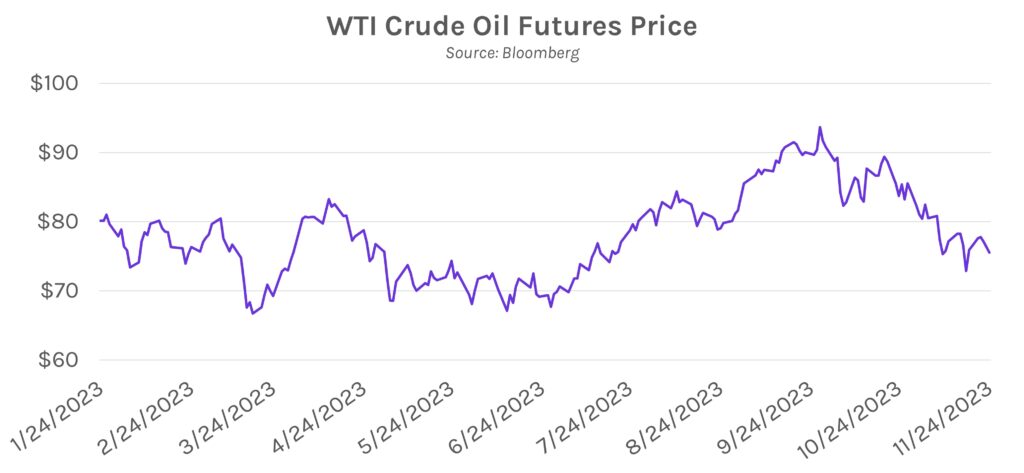UST Yields climb on global selloff. November’s UST rally showed signs of stalling today, as global yields climbed following news that Germany seeks to suspend its net borrowing limit for a fourth consecutive year. The 2-year UST yield was up ~5bps ending at ~4.95%, and the 10-year UST yield rose ~6bps ending at ~4.47%. Equities were little changed today, and notably the S&P500 logged its fourth straight week of gains. Global stock funds saw inflows of about $40 billion in the two weeks through November 21st, the most since February 2022, as peak-rate bets continue to grow. Brent Crude prices struggled for direction today, trading between a $1 range, as OPEC+ grapples with internal disagreements over production quotas. WTI crude extended its Wednesday decline, with contracts trading at $75.40 as of 1:30 PM EST.

Shopping on Black Friday is expected to be historic. Consumers are expected to stiff-arm their way through elevated inflation and interest rates on Black Friday; the National Retail Federation estimates that 182 million people in the US will shop in-store or online from Thanksgiving through Cyber Monday. The forecast is the highest since the NRF started tracking the data in 2017 and reflects the value of discounts in an otherwise expensive economy. Fed hikes have diminished retail sales, which plummeted from +0.9% in September to -0.1% in October, though the holidays and their discounts could provide a boost. The NRF also estimates that US shoppers will spend an average of $875 on holiday purchases this year, a $42 rise from last year and another positive signal.

GDP and PCE to highlight the week ahead. Make sure to relax on your holiday weekend, as markets will jump right back to action with a data-packed slate next week. The second Q3 GDP estimate (Wednesday) is expected to come in at 5.0% after the first estimate yielded 4.9%, nearly a 3% jump from Q2 that boosted soft landing narratives. Markets are also expecting positive results from PCE, which is predicted to decline across the board, excluding the QoQ print. A decline would strengthen Fed confidence in the economy’s shift back to 2% long-term inflation, especially given that PCE is the Fed’s preferred inflation gauge.
